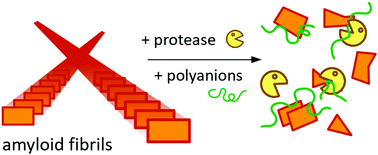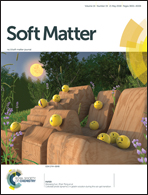Tightly bound polyelectrolytes enhance enzyme proteolysis and destroy amyloid aggregates
Abstract
The use of polyelectrolytes is a prospective approach to form nanocomplexes to transport different compounds including proteins. In many cases, the bound protein should be digested after delivery to the target. In the present work, we studied proteolysis of glyceraldehyde-3-phosphate dehydrogenase (GAPDH) in the complexes with polyelectrolytes. We have found polyanions to enhance the proteolytic degradation of GAPDH by proteinase K and thermolysin. This effect seems to be caused by destabilization of the protein structure. However, this destabilization is reversible since the release of the enzyme from the complexes with polymers (even tightly bound with the protein such as sulfated polymers and supercharged pyridinium polycations) was accompanied by partial or complete reactivation of GAPDH, depending on the polymers and conditions. Finally, we observed that complexation with sulfated polymers enhances the proteolytic degradation of prion fibrils by proteinase K. The obtained results can be useful for treatment of pathologies associated with amyloid aggregation.



 Please wait while we load your content...
Please wait while we load your content...